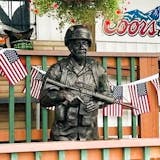A complete overhaul of the region's bus signs began Tuesday as Metro Transit seeks to make the local bus, the backbone of the transit system, less mysterious for prospective riders.
Thousands of signs that now herald simply "Bus Stop" are being swapped for signs featuring route numbers, stop IDs, route maps, bus frequencies or methods for determining real-time arrival information. The first major sign redesign since 1996 comes as Metro Transit prepares to roll out a smartphone app, launch its first urban high-speed bus route and install hundreds of new bus shelters along high-ridership corridors.
"As many different improvements as we [have] made in our transit service, we really have neglected our front porch," said Brian Lamb, Metro Transit general manager. "And our front porch to our customers is the bus stop. That's where we present ourselves to our customers really for the first time."
The local bus remains the engine of the Twin Cities transit system, having delivered 63 percent of all rides taken in the first quarter of 2015. That's compared with 21 percent for light rail and 12 percent for express buses.
Yet after surveying 30 national high-ridership transit agencies, Metro Transit found that only one, Atlanta, provided as little information at its basic bus stops. Some higher-ridership stops in the Twin Cities feature more information than "Bus Stop," though generally not as much as what will be displayed on the new signs.
"I do think that we are back of the pack," Lamb said, adding that Metro Transit surpasses peer agencies in other areas, such as the quality of its bus fleet.
The rollout begins this fall with the installation of about 2,300 signs primarily in the urban core, at a cost of $300,000. In the next two years, it will ultimately reach all approximately 12,000 bus stops around the Twin Cities.
Every stop will have basic information about which buses stop there and the stop number, along with instructions on using the stop number to query GPS-linked arrival times via text message or a mobile site. About 20 percent of stops with higher ridership will have additional information such as maps, how often the bus arrives, the route direction and the destination of different branches.



